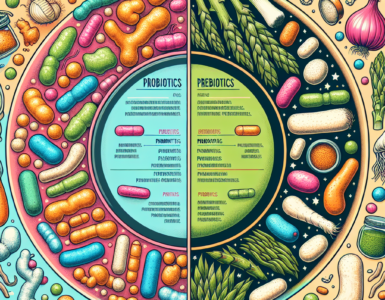The Importance of Fats in the Diet
Fats are a fundamental component of a balanced diet, providing energy, supporting cell growth, protecting organs, and keeping the body warm. They also play a crucial role in absorbing nutrients and producing important hormones.
Defining Healthy Fats
Healthy fats refer to unsaturated fats, which include monounsaturated and polyunsaturated fats. These types of fats are considered beneficial to health and can help to reduce the risk of heart disease and lower cholesterol levels when they replace saturated fats in the diet.
| Type of Fat | Description | Health Impact |
|---|---|---|
| Saturated Fats | Typically solid at room temperature, found in animal products and some plant oils. | Can raise LDL cholesterol levels, increasing the risk of heart disease. |
| Monounsaturated Fats | Liquid at room temperature and can be found in various oils and nuts. | Help reduce bad LDL cholesterol levels, which can lower the risk of heart disease and stroke. |
| Polyunsaturated Fats | Also liquid at room temperature, found in plant-based oils and fish. | Provide essential fats that the body needs but can’t produce itself, such as omega-3 and omega-6 fatty acids. |
Healthy fats are often found in plant-based foods and fatty fish. Avocados, nuts, seeds, and certain oils like olive and canola are prime examples of foods with a high content of healthy fats.
The Role of Fats in Overall Health
Fats, particularly healthy fats, are vital for maintaining overall health. They support several of the body’s functions, such as vitamin and mineral absorption, blood clotting, building cells, and muscle movement.
-
Nutrient Absorption: Fats help the body absorb vitamins A, D, E, and K, and they are essential for nourishing the skin and regulating cholesterol metabolism.
-
Hormone Production: Fats are involved in producing hormones that regulate inflammation, blood clotting, and contraction and relaxation of artery walls.
-
Cell Structure: Fats contribute to the structure of cell membranes, providing a balance between rigidity and fluidity, which is necessary for cell function and communication.
The intake of healthy fats should be balanced with other macronutrients to ensure a well-rounded diet. Replacing unhealthy fats with healthier options can lead to better cardiovascular health, among other benefits. It is important to monitor the type and quantity of fats consumed to maintain a healthy lifestyle.
Breaking Down Fatty Acids
Fatty acids are the building blocks of the fats in our diet and are crucial for numerous body functions. They come in different types, each with unique properties and effects on health.
Saturated Fats
Saturated fats are a type of fat commonly found in animal products and some plant-based sources. They are known for being solid at room temperature. While they have been associated with heart disease in the past, recent studies suggest that moderate intake may not be as harmful as once thought, especially when part of a balanced diet.
Common sources of saturated fats include:
- Red meat
- Dairy products
- Coconut oil
- Palm oil
The key is to manage the intake of saturated fats, ensuring they do not exceed recommended levels.
Monounsaturated Fats
Monounsaturated fats are recognized for their liquid state at room temperature and solidifying when chilled. They are considered one of the healthier fats, contributing to lowering bad cholesterol levels and providing essential nutrients to maintain the body’s cells.
Rich sources of monounsaturated fats include:
- Olive oil
- Avocado
- Nuts like almonds and cashews
Incorporating these fats into one’s diet can be beneficial for long-term health.
Polyunsaturated Fats
Polyunsaturated fats are essential fats, which means they are required for normal body functions but the body can’t produce them. Thus, they must be obtained from the diet. There are two main types of polyunsaturated fats: omega-3 and omega-6 fatty acids.
Omega-3 Fatty Acids
Omega-3 fatty acids are a type of polyunsaturated fat that are crucial for brain function and cell growth. They are also believed to reduce the risk of heart disease. There are three main types of omega-3s: ALA (alpha-linolenic acid), EPA (eicosapentaenoic acid), and DHA (docosahexaenoic acid).
Sources of omega-3 fatty acids include:
| Type | Sources |
|---|---|
| ALA | Flaxseeds, chia seeds, walnuts |
| EPA and DHA | Fatty fish like salmon, mackerel, and sardines |
It is vital to include these in a healthy eating pattern due to their anti-inflammatory properties.
Omega-6 Fatty Acids
Omega-6 fatty acids are another form of polyunsaturated fats found in various oils and foods. They are important for brain function and normal growth and development. However, a high intake of omega-6s in relation to omega-3s can contribute to inflammation and related health issues.
Common sources of omega-6 fatty acids include:
- Corn oil
- Sunflower oil
- Soybean oil
Balancing omega-6 with omega-3 intake is essential for maintaining a healthy ratio that supports overall well-being.
Understanding the different types of fatty acids is key to making informed choices about fat intake. By focusing on the types of healthy fats and their food sources, individuals can enhance their diet and support their overall health.
Sources of Healthy Fats
To maintain a balanced diet, incorporating sources of healthy fats is essential. These fats not only provide energy but also support cell growth, protect organs, and help in the absorption of nutrients. Here are some of the most nourishing sources of healthy fats.
Avocados and Their Unique Fat Profile
Avocados are renowned for their rich, creamy texture and unique fat composition. Primarily composed of monounsaturated fats, avocados offer a plethora of health advantages, including aiding in the absorption of other carotenoids—nutrient compounds which are fat-soluble.
| Nutrient | Amount in 100g of Avocado |
|---|---|
| Total Fat | 15g |
| Monounsaturated Fats | 10g |
| Polyunsaturated Fats | 2g |
| Saturated Fats | 2.1g |
Nuts and Seeds: A Powerhouse of Nutrients
Nuts and seeds are compact nutrient powerhouses, providing a mix of monounsaturated and polyunsaturated fats, along with essential vitamins and minerals.
Almonds, Walnuts, and Chia Seeds
Almonds, walnuts, and chia seeds are exemplary when it comes to their fat profiles. Walnuts, for instance, contain significant amounts of alpha-linolenic acid (ALA), a type of omega-3 fat.
| Nutrient | Almonds (per ounce) | Walnuts (per ounce) | Chia Seeds (per ounce) |
|---|---|---|---|
| Total Fat | 14g | 18g | 9g |
| Monounsaturated Fats | 9g | 2.5g | 0.6g |
| Polyunsaturated Fats | 3.5g | 13g | 7g |
| Omega-3 Fatty Acids | – | 2.5g | 5g |
Plant Oils and Their Health Benefits
Plant oils such as olive oil and canola oil are staples in kitchens due to their wholesome fat content and health-enhancing properties.
Olive Oil and Canola Oil
Olive oil is celebrated for its monounsaturated fats, which are believed to contribute to heart health. Canola oil, which contains both monounsaturated and polyunsaturated fats, including omega-3s, is another healthful choice for cooking and dressings.
| Nutrient | Olive Oil (per tablespoon) | Canola Oil (per tablespoon) |
|---|---|---|
| Total Fat | 14g | 14g |
| Monounsaturated Fats | 10g | 8.9g |
| Polyunsaturated Fats | 1.5g | 3.9g |
| Omega-3 Fatty Acids | 0.1g | 1.3g |
Fatty Fish: A Critical Source of Omega-3s
For a direct intake of omega-3 fatty acids, fatty fish are an unparalleled source. These essential fats are crucial for heart, brain, and overall health.
Salmon and Mackerel
Salmon and mackerel are not only delicious but are also among the best sources of EPA and DHA, the active forms of omega-3s that the body can use immediately.
| Nutrient | Salmon (3 ounces) | Mackerel (3 ounces) |
|---|---|---|
| Total Fat | 5g | 16g |
| Monounsaturated Fats | 2.5g | 6g |
| Polyunsaturated Fats | 1.5g | 3.5g |
| Omega-3 Fatty Acids | 1.5g | 1g |
Incorporating these sources of healthy fats into one’s diet can greatly contribute to improved health outcomes. However, it’s important to consume these fats in moderation as part of a varied and balanced diet.
The Impact of Healthy Fats on the Body
The consumption of healthy fats plays a pivotal role in maintaining and enhancing various bodily functions. This section delves into how different types of healthy fats contribute to cardiovascular health, brain function and mental health, as well as inflammation and immunity.
Cardiovascular Health
Healthy fats, particularly monounsaturated and polyunsaturated fats, have been shown to have a beneficial effect on heart health. These fats can help to lower levels of bad cholesterol (LDL) while increasing good cholesterol (HDL), thereby reducing the risk of heart disease.
| Type of Fat | Effect on Cardiovascular Health |
|---|---|
| Monounsaturated Fats | May reduce bad cholesterol levels |
| Polyunsaturated Fats (Omega-3s) | Can help lower triglycerides and blood pressure |
| Polyunsaturated Fats (Omega-6s) | Might improve lipid profiles |
Including sources of these fats, like avocados, nuts, seeds, and fatty fish, can be a strategic way to protect the heart and ensure the circulatory system functions optimally.
Brain Function and Mental Health
Fats are fundamental components of brain tissue. They are crucial for cognitive function, playing a role in memory, learning, and overall brain health. Omega-3 fatty acids, in particular, are essential for brain development and maintenance.
Healthy fats have also been associated with a lower risk of mental health issues. Omega-3 fatty acids, for instance, have shown potential in reducing symptoms of depression and anxiety.
| Type of Fat | Effect on Brain Function and Mental Health |
|---|---|
| Omega-3 Fatty Acids | Vital for brain development and cognitive function |
| Omega-6 Fatty Acids | Important for brain function, though balance with omega-3s is crucial |
A diet rich in these nutrients can support both the physical structure of the brain and contribute to emotional well-being.
Inflammation and Immunity
Fatty acids are not only a source of energy but also modulate the body’s inflammation pathways. Omega-3 fatty acids, especially, have anti-inflammatory properties that can help manage and reduce chronic inflammation and may bolster the immune system.
Conversely, an imbalance favoring omega-6 fatty acids over omega-3s can lead to pro-inflammatory states. Therefore, maintaining a balanced intake of these fatty acids is crucial for inflammation control and overall immune function.
| Type of Fat | Effect on Inflammation and Immunity |
|---|---|
| Omega-3 Fatty Acids | Anti-inflammatory effects and may enhance immune function |
| Omega-6 Fatty Acids | Necessary for immune health, but balance with omega-3s is key to prevent excessive inflammation |
By understanding the impact of different types of healthy fats on the body, individuals can make informed dietary choices that contribute to their overall well-being. Integrating a variety of sources of healthy fats into one’s diet can aid in achieving a balanced intake that supports cardiovascular health, brain function, mental health, and a well-functioning immune system.
Balancing Fats in Your Diet
Managing the intake of fats is crucial for maintaining a healthy diet. It involves not just the quantity but also the quality of fats consumed. This section will explore the recommended daily intake of fats, ways to incorporate these fats into meals, and the importance of balancing different types of fatty acids.
Recommended Daily Intake of Fats
The dietary guidelines suggest that fats should make up 20% to 35% of an individual’s total daily calories. It is essential to focus on the intake of healthy fats, limiting saturated fats and avoiding trans fats. The below table provides a general overview of the recommended daily fat intake based on a 2,000 calorie diet.
| Total Daily Calories | Total Fats (20-35% of calories) |
|---|---|
| 2,000 | 44g – 77g |
Integrating Healthy Fats into Meals
Incorporating healthy fats into one’s diet can be done in various ways. Here are some suggestions:
- Sprinkle seeds such as flaxseed or chia seeds onto salads or into smoothies.
- Snack on a handful of nuts, like almonds or walnuts, for a heart-healthy boost.
- Use avocado as a spread on whole-grain toast or add to salads for a creamy texture.
- Cook with plant oils that are high in unsaturated fats, such as olive oil or canola oil.
- Include fatty fish, like salmon or mackerel, in meals a few times a week.
Each meal presents an opportunity to include a source of healthy fats. By making small adjustments to one’s diet, individuals can ensure they are consuming fats that support their overall health.
The Balance Between Omega-3 and Omega-6 Fats
The balance between omega-3 and omega-6 fatty acids is a key factor in a healthy diet. Both are essential polyunsaturated fats, but they have different roles in the body. It is generally recommended to consume more omega-3s, which are anti-inflammatory, compared to omega-6s, which can be pro-inflammatory when consumed in excess.
| Fatty Acid Type | Recommended Ratio (Omega-6:Omega-3) |
|---|---|
| Omega-6 to Omega-3 | 4:1 – 1:1 |
Achieving the right balance can be done by:
- Reducing the use of oils high in omega-6, such as certain vegetable oils.
- Increasing the intake of omega-3-rich foods, such as fatty fish, walnuts, and flaxseeds.
By being mindful of the types of fats and their sources, health-conscious adults can optimize their intake to support their cardiovascular health, brain function, and overall well-being. Balancing the types of healthy fats consumed is an integral part of a well-rounded, nutritious diet.











